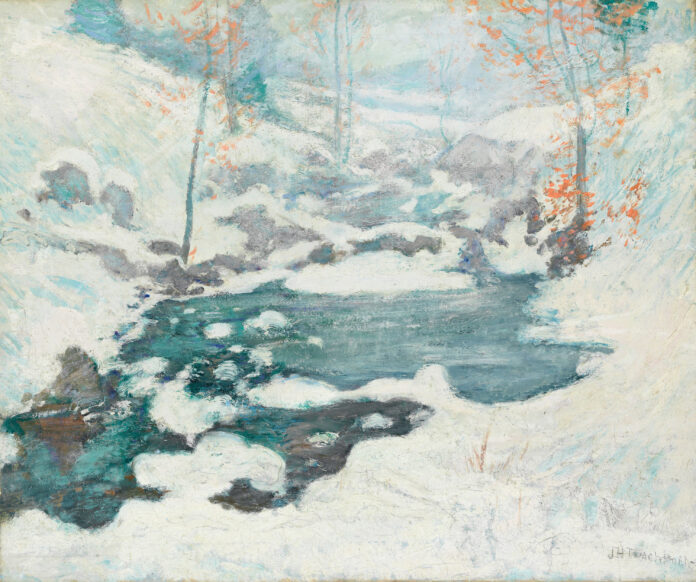
Learn about those who have helped start the plein air painting movement in some way, and be moved to continue your own journey. For even more inspiration, subscribe to PleinAir® Magazine.
Our Plein Air Painting Heritage
During the last decade of his life, John Henry Twachtman (American, 1853–1902) frequently painted views of the brook, falls, and pools surrounding his home in Greenwich, Connecticut. The work ranges from naturalistic representations to enlarged, simplified visions in which the sky is often eliminated.
The oriental feel of these pieces points to the artist’s study of Zen philosophy and Japanese art. And while their analytic nature has much in common with Monet’s garden scenes, they more closely resemble Whistler’s nocturnes, conveying a tonal, spiritual response to the landscape. A contemporary critic observed, “Twachtman painted day, as Whistler painted night.”
Displaying this poetic sensibility, the artist often explored the quiet beauty of a snowy landscape, finding the icy terrain conducive to contemplation and regeneration. Keying his palette to the saturated white of snow, ice, and atmosphere, he gradually built up dense layers of paint in “Icebound” to mimic the accumulation of snow on frozen ground.
The sinuous curves that define the snow and ice against the water suggest movement in an otherwise tranquil environment. Almost square in format, the painting’s harmonious composition exemplifies Twachtman’s opinion that “never is nature more lovely than when it is snowing.”
> Subscribe to Plein Air Today, a free newsletter for artists



